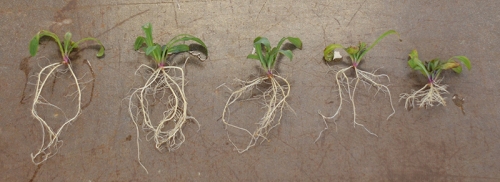Fall Conference starts next week at Cal Poly, signaling the end of summer 2015. Based on this blog my summer appeared to be full of vacation, however that would be an illusion. The Scotland vacation was lovely, but I have worked the remainder of the summer.
To keep my job in the long term (i.e. get tenured) I need external validation of my scholarly standing. The form of external validation I need is peer-reviewed publication. Peer-reviewed publications require data. And so I spent the summer running 20 experiments to generate data, preparing courses (my contract is 100% teaching, after all), and analyzing data I have for a teaching methods manuscript I am writing.
My first round of experiments were in a seed germination study. I was examining char inclusion in substrate. The data look promising. I will be repeating aspects of this experiment this fall.
The second study I launched involved char inclusion in cuttings substrates. I’m still in the process of harvesting data, but some of the data are intriguing. I will aim to repeat these experiments in the late winter or spring. The third study I set up involved char inclusion in cutting substrates and different forms of auxin application. I’ve collected some of the data from these experiments, and so far I am seeing some interesting trends. The root studies involve root scanning. I wash the substrate from the plant, use a razor to slice off all the roots, and scan them. Later I will analyze the scans to count the number of first order lateral roots (i.e. primary roots initiated by the cutting), primary root length, and root area and/or volume. Analysis of the scans will be done this fall when I find time. For now obtaining the scans is a full time job. I still have many hours of scanning remaining, so I’ll fit those into the gaps next week and probably the weekends early in the fall quarter. If all goes well I’ll have two manuscripts submitted by early 2016, with another one or two in production. If all does not go well the number will be lower. I prefer to think things will go well.









